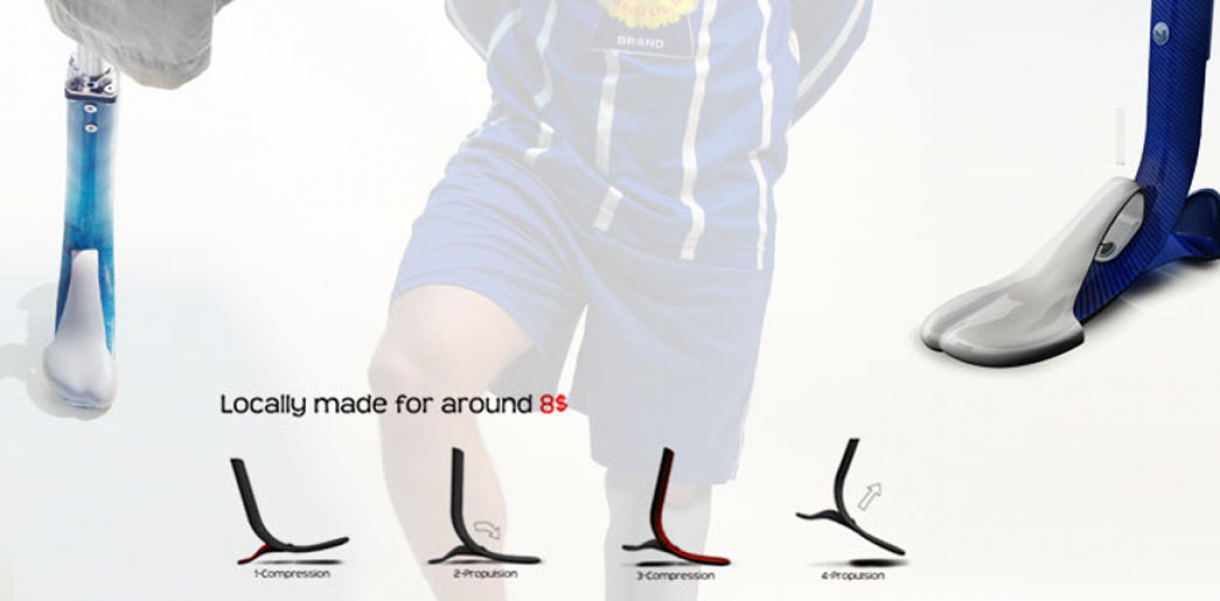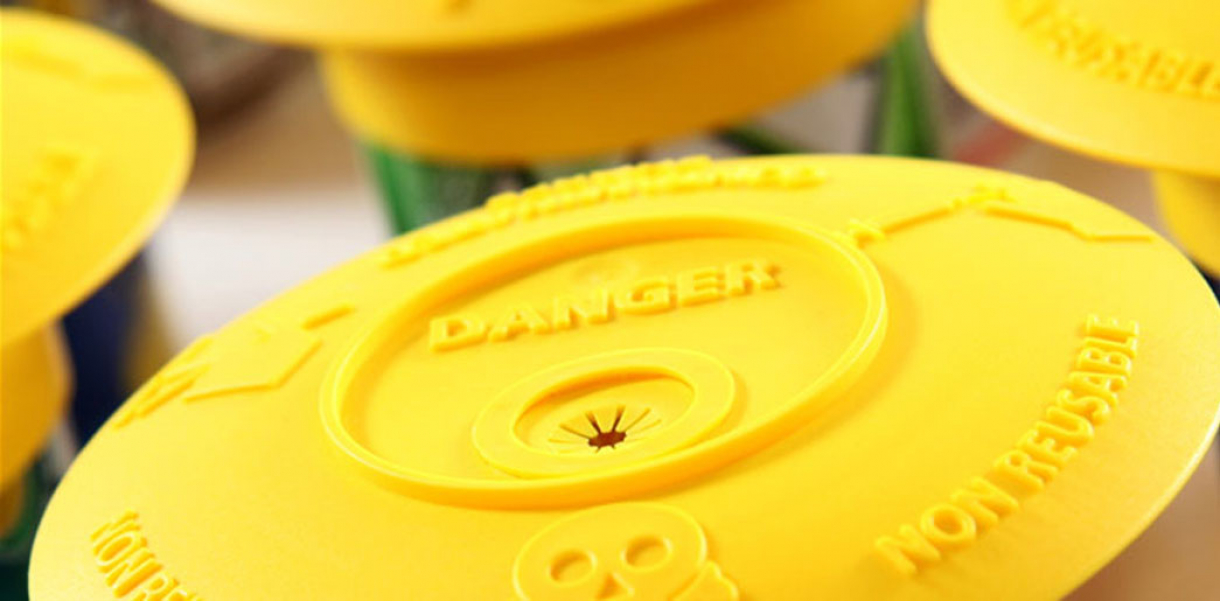Every year 25,000 people are injured by landmines, 80 percent of them are civilians and most of them are kids.
So prevalent a part of modern warfare is the landmine that there is a kind of "landmine museum" in Cambodia. Created by a former Khmer Rouge insurgent named Aki Ra, the New York Times calls the attraction "a jarring reminder of the country's three decades of war." The bad news is that fewer than half the landmines in the region have been intercepted.
Quebecois designer Sébastien Dubois' creation of the Mobility for Each One prosthetic offers hope, at least, of an affordable and highly effective prosthetic for those injured by mines.
With function and cost his main interests, Dubois set about using the "energy-return" approach to the creation of this artificial foot made to replicate natural leg movement. By propelling toe- and foot-movement forces back into the leg, the design makes walking easier. The design is light, durable, water-resistant, easy to clean.
Made to the standards of the Red Cross, the design can be fitted to various types of upper leg prosthetics.
And another strong point noted by the INDEX: jury is ease of production: The product can be made in any local conventional workshop using easily found materials, which lowers the prize to US$8 a piece as opposed to the normal prize of an energy return prosthetics which costs up to US$4,000 and thus can be afforded by very few victims of landmines.
UNICEF, one of many organizations fighting to have landmines found, neutralized and banned, points out that children are particularly vulnerable to these hidden remnants of past conflicts.
Kids, the organization reminds us, may be too young or not yet literate enough to read signs posted in areas where landmines are thought to lie. And of course, children are curious. They may "explore" something unusual found in a field – to their peril.
UNICEF reports that at least 41 nations are on record as being in favor of the permanent elimination of landmines in the world. But even if a new one is never laid again, estimates suggest there may be 110 million still out there.
Designed by
Sébastien Dubois - Canada




